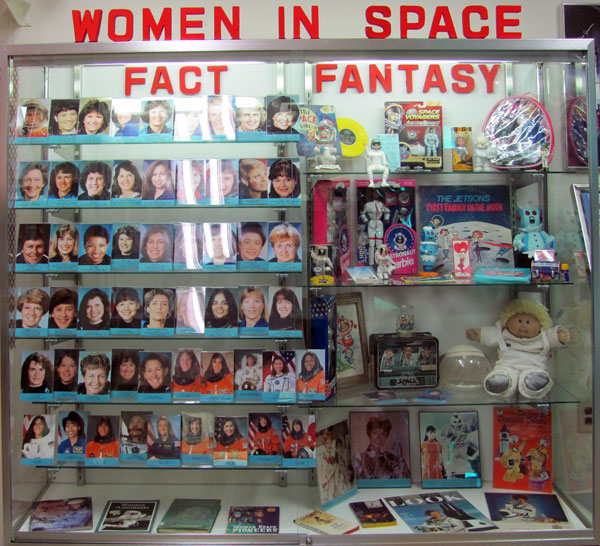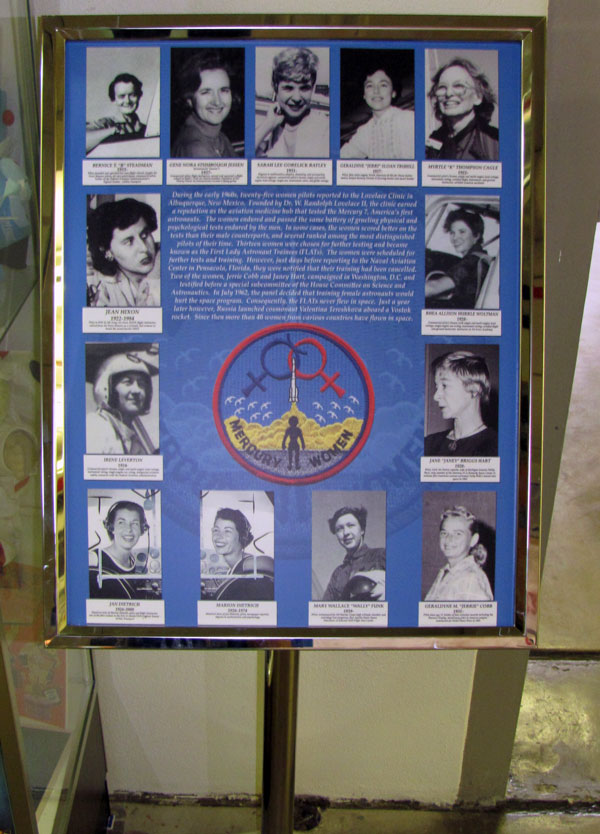
Photo Gallery
Overview
Display location:
There are several components to this display. The whimsical “Fact and Fantasy” display (right) outlines the contributions of women astronauts of all nations and some of the perceptions that were prevalent in days gone by.
Mercury 13 Group
Another display outlines the little known story of the “Mercury 13,” a group of women pilots who were selected to be potential astronauts. During the early 1960s, twenty-five women pilots reported to the Lovelace Clinic in Albuquerque, New Mexico. Founded by Dr. W. Randolph Lovelace II, the clinic earned a reputation as the aviation medicine hub that tested the Mercury 7, America’s first astronauts.
The women endured and passed the same battery of grueling physical and psychological tests endured by the men. In some cases, the women scored better on the tests than their male counterparts, and several ranked among the most distinguished pilots of their time.
First Lady Astronauts
Thirteen women were chosen for further testing and became known as the First Lady Astronaut Trainees (FLATS). The women were scheduled for further tests and training. However, just days before reporting to the Naval Aviation Center in Pensacola, Florida, they were notified that their training had been cancelled.
Two of the women, Jerrie Cobb and Janey Hart, campaigned in Washington, D.C. and testified before a special subcommittee of the House Committee on Science and Astronautics. In July 1962, the panel decided that training female astronauts would hurt the space program. Consequently, the FLATs never flew in space.
Just a year later, however, Russia launched cosmonaut Valentina Tereshkova aboard a Vostok rocket. Since then more than 40 women from various countries have flown in space. NASA selected its first group of women astronauts on 13 January 1978.
Other Markers & Displays